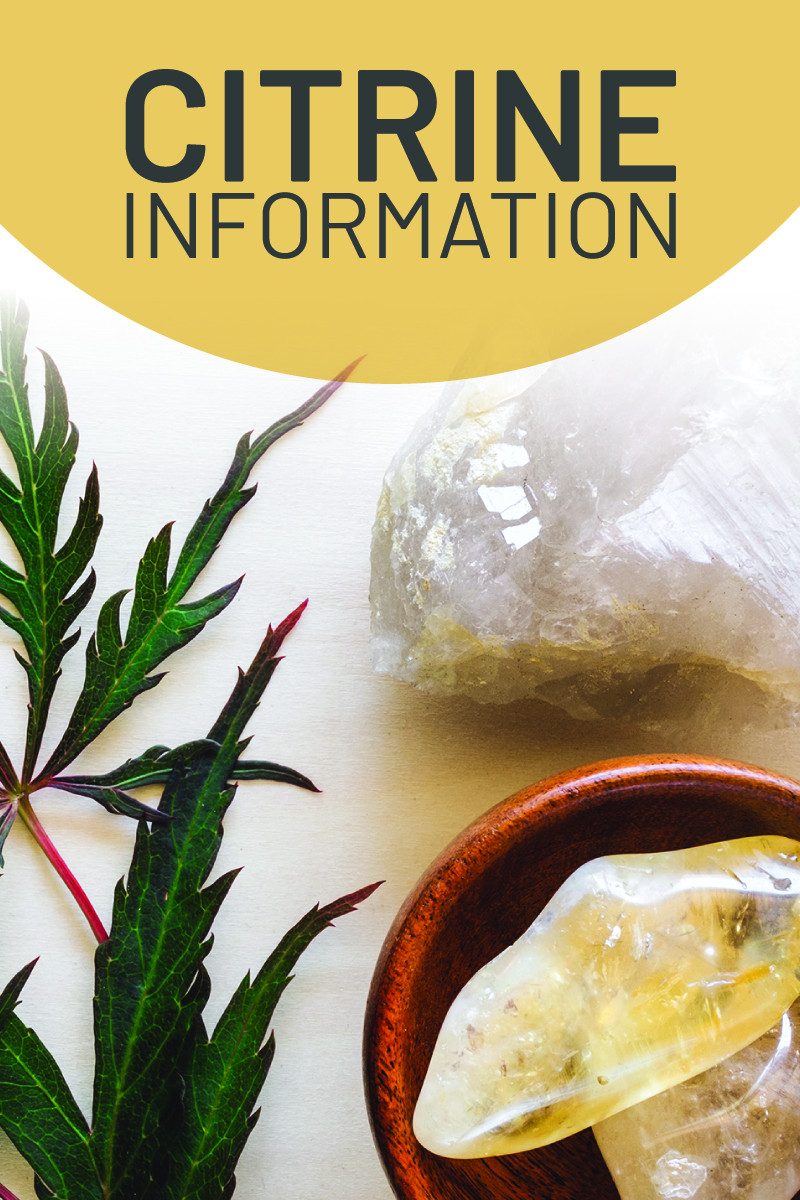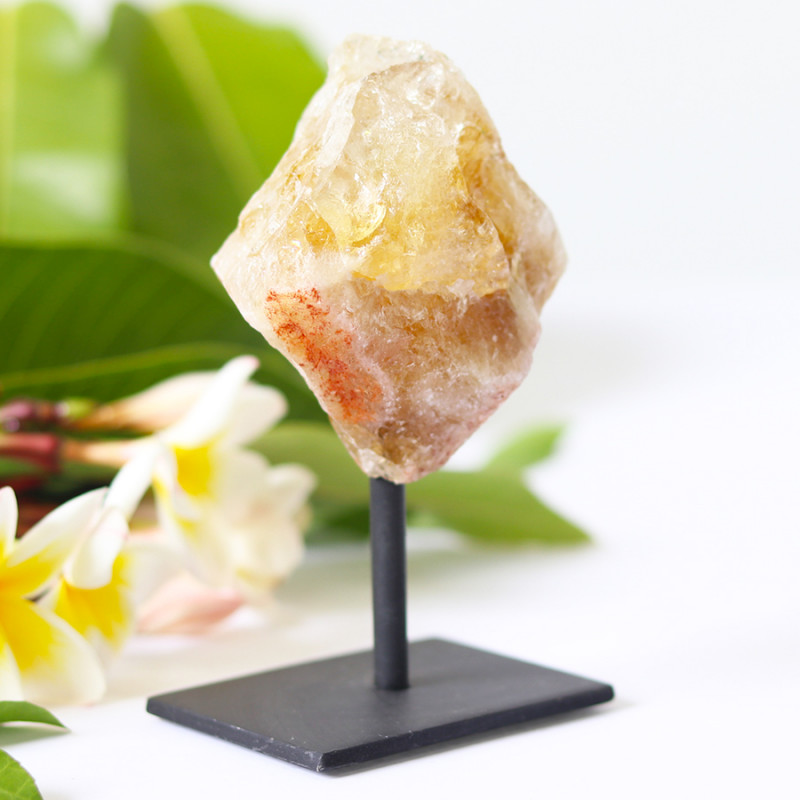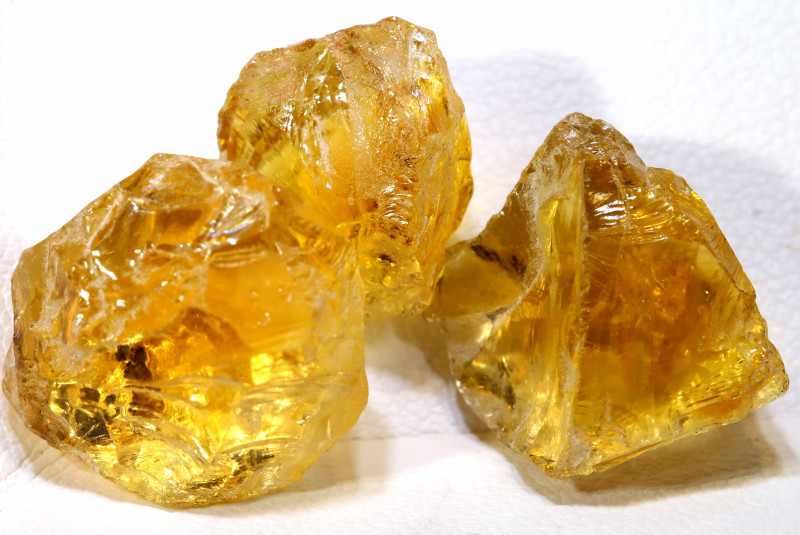
Dragulj citrin: značenje, povijest, svojstva i vrijednost
 Ako ste ikada željeli uhvatiti moć sunčeve svjetlosti u dragom kamenu, ne tražite dalje od citrina! Jedan pogled na žuti sjaj citrina ispunjava dušu toplinom i vitalnošću. Pa što je citrin i što ga čini tako moćnim?
Ako ste ikada željeli uhvatiti moć sunčeve svjetlosti u dragom kamenu, ne tražite dalje od citrina! Jedan pogled na žuti sjaj citrina ispunjava dušu toplinom i vitalnošću. Pa što je citrin i što ga čini tako moćnim?
Citrin je prekrasan kvarcni mineral u žutim ili narančastim tonovima koji preplavljuje pozitivnošću. Zahvaljujući svojoj svestranosti, citrin je savršen za uparivanje sa zlatnim ili srebrnim nakitom. Neophodan odjevni predmet, tko zna?
Osim zapanjujućeg izgleda, citrin može donijeti sreću i samopouzdanje potrebno za postizanje vaših ciljeva.
Povijest citrina je fascinantna priča koja ističe njegove brojne prednosti i upotrebu danas. Naš sveobuhvatni vodič reći će vam sve što trebate znati o ovom briljantnom dragulju.
Nastavite čitati kako biste saznali sve informacije o citrinu koje ga čine neizostavnim dragim kamenom!

O citrinu
Citrin je vrsta silicijevog minerala kvarca koji dolazi u nizu žutih nijansi. Kao drugi najčešći mineral u Zemljinoj kori, vrste kvarca su posvuda. Ostali kvarcni kameni uključuju ametist , krvavi kamen i aventurin , da spomenemo samo neke.
Ako ste rođeni u studenom, pozdravite svoj rodni kamen citrin! Tople žute i narančaste nijanse ovog kamena savršeno se slažu s ovim dobom godine. Kao prekretnica između jeseni i zime, studeni uravnotežuje oba godišnja doba.
Je li netko spomenuo ravnotežu? Zodijački kamen citrin krasi Vagu, znak ravnoteže i sklada. S obzirom na njihov ugled optimističnog idealizma, logično je da Vage predstavlja ovaj kristal radosti i ljubavi.
Kad smo već kod ljubavi, citrin je tradicionalni dar u spomen na 13. godišnjicu braka. Ako poznajete nekoga tko se približava ovoj prekretnici, ovo je savršen dar za proslavu njihovog uspjeha i sreće.
Kao što smo spomenuli, citrin je kvarcni mineral. To znači da je kemijski sastav citrina silicijev dioksid ili silicij. Zapravo, preko 95 posto svih poznatih stijena na Zemlji uglavnom se sastoji od silicija. Iako se uglavnom koristi u građevinskoj industriji, možete ga pronaći u hrani, keramici i naravno nakitu!
S obzirom na različite namjene, silicijev dioksid je očito prilično tvrd. Zbog toga citrin ima impresivnih 7 na Mohsovoj ljestvici tvrdoće .
Spremni ste saznati više? Pogledajmo specifične karakteristike citrina.
Specifikacije i karakteristike citrina
Boja: žuta, narančasta, zlatna, smeđenarančasta, crvenkastonarančasta
Kristalna struktura: trigonalna
Sjaj: staklast (nalik staklu)
Prozirnost: prozirna do prozirna
Indeks loma: 1,54-1,55
Gustoća: 2,6-2,7
Dekolte: nema
 Značenje i upotreba kamena citrin
Značenje i upotreba kamena citrin
Što citrin čini duhovno? I što simbolizira kamen citrin?
Citrin simbolizira radost, optimizam i uspjeh. Spomenuli smo da ga kineske legende nazivaju "kamenom uspjeha", i to s dobrim razlogom! Može vam pomoći da manifestirate postignuća i bogatstvo u izobilju. Taj ugled doveo je do još jednog nadimka za citrin: "dragi kamen trgovca".
Osim novčanih pitanja, citrin vas može riješiti i tuge i sumnje u sebe. Nošenje nakita od citrina može otjerati loše vibracije i izvući radost i kreativnost gdje god da idete.
Brinete li se o tome što drugi misle o vama? Citrin može preuzeti te strahove i zamijeniti ih samopouzdanjem, omogućujući vam pristup vašoj punoj osobnoj snazi.
Govoreći o moći, citrin se povezuje sa Sekhmet , egipatskom božicom rata. Ne samo da je bila zaštitnica faraona, već je nudila iscjeljenje i lijekove svojim sljedbenicima.
Srećom, ne morate biti egipatska božica da biste iskoristili ljekovite moći citrina!
Zapravo, pogledajmo mnoga ljekovita svojstva citrina.

Duhovna i ljekovita svojstva citrina
Vibracije i frekvencije kristala čine ih snažnim kanalima za kristalno iscjeljivanje . Dakle, kada je riječ o iscjeljivanju, za što je citrin dobar?
Fizički, ljekovita svojstva citrina mogu ublažiti probleme s probavom i spavanjem. Može ojačati probavni trakt, uklanjajući toksine iz vašeg sustava.
Imate li noćne more? Citrin ih može ukloniti, a uz to i povećati energiju kod svakoga tko se bori s kroničnim umorom.
Što se tiče emocionalnog iscjeljenja, citrin koristi svima koji pokušavaju prevladati strah ili tugu. Njegova detoksikacijska svojstva uklanjaju negativnu energiju i otvaraju um pozitivnijim perspektivama i idejama.
Iscjeljivanje čakri uključuje povezivanje s našim duhovnim ja putem energetskih centara, čakri, u našim tijelima. Citrin odgovara dvjema čakrama: solarnom pleksusu i sakralnoj čakri.

Čakra solarnog pleksusa
Čakra solarnog pleksusa nalazi se u središtu tijela, odmah ispod rebara. Povezana s vatrom, to je središte strasti, moći i snage.
Kada je solarni pleksus blokiran, možete osjećati nisko samopoštovanje i zbunjenost. Citrin može otvoriti ovu čakru, čineći vas sretnijima i povećavajući samopoštovanje.
Sakralna čakra
Sakralna čakra nalazi se iznad stidne kosti, usidrena u kralježnici. Ova čakra je središte svega zabavnog i svijetlog: kreativnosti, prijateljstva i seksualnosti.
Blokada u sakralnoj čakri dovodi do neuravnoteženih emocija i impulsa. Međutim, s citrinom se ova čakra otvara za slobodan protok emocija, potičući vas da se obratite drugima.
Svojstva dragog kamena citrina
Jeste li zainteresirani za kupnju nakita od citrina, ali ne znate odakle početi? U sljedećem odjeljku obradit ćemo neke važne čimbenike na koje treba obratiti pozornost prilikom kupnje dragog kamenja. Prvo krenimo s bojom citrina.
Boja
Želite li slikati svim bojama vjetra poput Pocahontas? Citrin vam nudi sve što vam treba. Njegove nijanse kreću se od blijedožute boje limunove korice do bogatih, zemljano smeđih nijansi trešnje. S mnoštvom zlatnožutih i narančastih nijansi između njih, sigurno ćete pronaći savršenu za sebe.
U svom prirodnom stanju, citrin je obično svijetložute boje sa zadimljenim sjenama. Iako ćete vjerojatnije pronaći kamenje u ovoj nijansi, tamnije varijante su vrlo tražene.
Najpoželjniji od njih je madeirski citrin , nazvan po sličnosti s portugalskim vinom i jantarnom sjaju. Druga značajna sorta je vatreni citrin . Svjetlucajući u dubokim crveno-narančastim tonovima, ovaj kamen se vadi isključivo iz rudnika Linha Estefania u Brazilu i toplinski se obrađuje kako bi se postigla njegova živopisna boja.
Ako se pitate kako citrin dobiva svoju boju, to je željezo!
Kako je prirodni citrin sve teže pronaći, sve više draguljara okrenulo se toplinskoj obradi drugih dragulja kako bi postigli prepoznatljive boje citrina. Pogledajmo ih!

Tretmani
Iako je najčešća nijansa citrina blijedožuta u svom prirodnom stanju, sam prirodni citrin je rijedak. Zapravo, većina citrina dostupnih danas je podvrgnuta toplinskoj obradi. Ti su postupci potpuno sigurni, odobreni u industriji i poboljšavaju boje i bistrinu citrina.
Često se ametist, kamen sestrin citrina, toplinski obrađuje kako bi se prodavao kao citrin. Ova vrsta ametista ponekad se naziva i "spaljeni ametist". Kada se zagrijava, mijenja boju iz tamnoljubičaste u jarko žutu ili narančastu, ovisno o tome koliko je taman bio na početku.
Još jedan kamen koji se toplinskom obradom pretvara u citrin je dimljeni kvarc. Za razliku od ametista, toplinski obrađeni dimljeni kvarc pokazuje svjetlije nijanse žute boje.
Toplinska obrada neće promijeniti kvalitetu vašeg kamena, ali ako se smatrate puristom citrina, evo kako ga razlikovati. Ako su boje najživlje vidljive na vrhovima kamena, dok baza izgleda bijela, vjerojatno je toplinski obrađen.
Sada kada smo obradili tretman citrinom, pozabavimo se njegovom jasnoćom.
Jasnoća
Osim što dragom kamenu daje njegov prepoznatljiv izgled, boja igra ključnu ulogu u određivanju čistoće kristala.
Međutim, budući da se boje dragog kamenja razlikuju, gemolozi ga obično ne ocjenjuju na obojenom kamenju kao što to čine s dijamantima. Umjesto toga, Gemološki institut Amerike (GIA) razvio je tri klasifikacije čistoće na temelju tipične količine inkluzija.
Kamen citrin spada u čistoću tipa I. Drugim riječima, nekoliko inkluzija koje ima nisu vidljive. Za pametne kupce, imajte na umu da inkluzije vidljive golim okom smanjuju vrijednost citrina.
Međutim, ne umanjuju sve inkluzije ljepotu kamena. Prirodni citrin može pokazivati vrstu inkluzije koja se naziva zoniranje boje, gdje raspodjela boje nije ujednačena. Kod citrina to obično dolazi u dva oblika:
Tigrove pruge: Ove inkluzije nastaju kada jedna ili više pukotina u kristalu zacijeli, ostavljajući jednu ili više linija koje nalikuju tigrovim prepoznatljivim oznakama.
Zebraste pruge. Gotovo identične tigrastim prugama, razlikuju se samo po uzorku. Obje se obično javljaju kada se kamen "udvostruči" tijekom svog formiranja. Udvostručavanje je kada dva kristala rastu zajedno, slojevito jedan preko drugog.
Sljedeće na našem popisu je izrezano. Krenimo!
Rez
Budući da je citrin izdržljiv, dolazi u raznim oblicima brušenja. Najpopularniji oblici su standardni okrugli i ovalni brusovi. Oni obuhvaćaju prepoznatljive boje citrina u svoj njihovoj blistavosti.
Iako citrini niže kvalitete često postaju kabošon kamenje , neki dizajneri eksperimentiraju s nekonvencionalnim oblicima i zamršenim dizajnom ili rezbarijama. Zbog svoje izrade i prilagodbe, ovi komadi su mnogo vrijedniji.
Sada kada znate sve specifikacije citrina, krenimo na putovanje kroz njegovu povijest.

Legende i povijest citrina
Vjerojatno ste do sada pretpostavili da je naziv citrin nekako povezan s citrusom , zar ne? Pa, u pravu ste! Citrin se zapravo zvao žuti kvarc sve do 1546. godine , kada ga je poznati mineralog Georg Bauer nazvao citrin. Ova riječ potječe od francuske riječi citron , što znači "limun".
Citrinovo mjesto u povijesti seže još dalje u prošlost, sve do antičkih vremena.
U Europi je ovaj kristal imao značajan ugled od Škotske do Grčke i Rima. Stari Grci izrađivali su prilagođene ukrase rezbareći u njih uzorke i vješajući ih kao ukrase. Stari Rimljani imali su sličnu ideju i koristili su citrin za izradu intaglia . To su bili mali gravirani dragulji koji su često sadržavali slike ili natpise.
U Škotskoj su vojnici koristili ukrase od citrina na svojim mačevima i bodežima, noseći ih u bitci. Navodno su neki čak i cijele drške mačeva pričvršćivali od kamena. Ništa ne govori prestiž kao mač od citrina!
U Kini su vjerovanja vezana uz citrin bila jednako fascinantna. Prema kineskim legendama, citrin je imao moć manifestirati uspjeh. Stoga bi ga trebali primiti samo oni koji su velikodušni da podijele svoj uspjeh.
Čak su i kineski carevi prihvaćali magična svojstva citrina. Vjerovali su da ih može učiniti mudrijima i proširiti im um, pa su često nosili nakit od citrina. Nije mogao izgledati ni previše otrcano, zar ne?
Povjesničari su otkrili artefakte iz viktorijanskog doba koji pokazuju da je citrin bio prilično popularan i u to vrijeme. Otkriven je zlatni privjesak s citrinskim središnjim kamenom i ukrašene broševe od citrina za koje se vjeruje da potječu iz sredine 19. stoljeća.
Citrin u modernom svijetu
Ulaskom u 20. stoljeće, popularnost citrina naglo je porasla tijekom Art Deco ere 20-ih i 30-ih godina. Dok su ljudi tražili bijeg nakon Prvog svjetskog rata, mnogi su se okrenuli kinu. Filmske zvijezde u tom su dobu nosile upečatljive komade od citrina koji su definitivno privlačili pažnju.
Greta Garbo, hvaljena zvijezda filma Camille iz 1936., hvalila se kolekcijom nakita u art deco stilu s citrinom. Zapravo, prodaja citrina eksponencijalno je porasla nakon što je Garbo viđena kako se razmeće velikim prstenom s citrinom.
Sada prijeđimo s toga kako je nastao ugled citrina na to kako se ovaj dragi kamen zapravo formira!

Podrijetlo i izvori citrina
Citrin raste na fascinantne načine. Većina citrina formira se unutar geoda, šupljih stijena gdje se mjehurići zadržavaju i stvaraju šupljine unutra. Ovdje se tekućine silicija miješaju s tekućim željezom prije nego što kristaliziraju u ovaj prekrasni dragulj.
Gdje možete pronaći citrin? Pa, na nekoliko mjesta. Citrin se pojavljuje i u magmatskim i u metamorfnim stijenama. U magmatskim stijenama magma putuje kroz vulkanske cijevi i postupno se hladi. Pod utjecajem intenzivne topline i tlaka, one se mogu pretvoriti u metamorfne stijene, poput granita, gdje se također formira citrin.
Ipak, ne morate kopati oko vulkana da biste pronašli citrin. Klastični sedimenti – komadići postojećih stijena koji se odlome i nose na nova mjesta – sadrže citrin na nekim mjestima.
Lokacije za rudarenje citrina
Većina nalazišta citrina nalazi se u Brazilu i Urugvaju. Rio Grande do Sul u južnom Brazilu proizvodi preko 650 funti citrina mjesečno!
Prirodni citrin dolazi iz Uralskih planina u Rusiji i s otoka Madagaskara.
Bolivija je nedavno počela proizvoditi velike količine citrina. Njihov prepoznatljivi izvoz citrina je kombinacija ametista i citrina nazvana ametrin , žute i ljubičaste boje.
Druge zemlje s nalazištima citrina uključuju Francusku, Belize, Namibiju, Indiju i Kinu.
Kao što vidite, citrin ima mnogo impresivnih svojstava. Dakle, koliko vrijedi kamenje citrina?
Cijena i vrijednost
Cijene citrina mogu varirati ovisno o karatima, brušenju i, što je najvažnije, boji. Pogledajmo ih detaljnije.
Citrini se općenito kreću između 4 i 30 dolara po karatu. Svjetlije boje obično su pristupačnije od kamenja tamnije boje. Nije iznenađenje da više karata znači veću vrijednost. Citrini s 10 ili više karata kreću se od 4 do 40 dolara po karatu.
Kad je riječ o boji citrina, određivanje cijene može biti malo nezgodno. Općenito, kamenje s tamnijim tonovima, poput prinstonske naranče ili boje bundeve, obično je rjeđe. Trgovci nakitom više cijene svaki kristal citrina s bogatom, zasićenom bojom bez vidljivih inkluzija.
Bilo koji prirodni dragi kamen gotovo je uvijek vrijedniji od obrađenog. Citrin je, međutim, prirodne svijetložute boje. Budući da kamenje tamnije narančaste nijanse ima veću tržišnu vrijednost, obrađeni citrin u tim nijansama mogao bi se prodati za više od prirodnog citrina.
Kao što je spomenuto, citrin se može oblikovati u delikatne rezbarije i prilagođene rezbarije, koje su vrlo cijenjene.
Općenito, međutim, citrin je prilično pristupačan. Možete pronaći prekrasan nakit ili kristale od citrina po razumnim cijenama.
Sveukupno, postoji dragulj citrina za svaki ukus i svakog kupca.
Sada kada smo obradili cijene citrina, pogledajmo kako se možemo brinuti za ove prekrasne dragulje.

Njega i održavanje
Citrin je snažan kamen koji je odličan za svakodnevno nošenje, ali nije neuništiv. Iako ima vrijednost 7 na Mohsovoj ljestvici, citrin je i dalje osjetljiv na ogrebotine od dragog kamenja višeg stupnja, poput topaza, safira i dijamanta.
Važno je čistiti i dobro se brinuti o svojim kristalima. Evo kako:
Imajte na umu da nagle promjene temperature mogu uzrokovati pukotine u kristalu, stoga ga pokušajte držati u konzistentnom okruženju.
Neki citrini mogu promijeniti boju i ako su izloženi intenzivnom svjetlu, stoga preporučujemo da ih držite u neprozirnoj posudi koja se može zatvoriti kada se ne koriste.
Kada je u pitanju čišćenje dragog kamenja, slijedite ove korake:
Nabavite zdjelu, sapun bez mirisa, toplu vodu i meku četkicu poput četkice za zube.
Napunite zdjelu toplom vodom i sapunom. Dobro ih promiješajte.
Stavite citrin u otopinu i ostavite da se namače oko pola sata.
Ako još uvijek ima prljavštine ili ostataka, nježno ih očistite mekom četkom.
Isperite sve ostatke sapuna i osušite krpom od mikrovlakana.
I spremni ste! Ako ovu rutinu prakticirate otprilike jednom mjesečno, vaš citrin će sjati cijeli život.
![10x8 mm Oval 2 kom 4,46 karata zlatnožuti citrin [VVS]](https://df2sm3urulav.cloudfront.net/tenants/gr/uploads/images/1435000-1439999/1435107/604dc3ba7aee0.jpg)
Trebate nalet svjetlosti u svoj život? Kupite citrin
Čestitamo! Sada imate sve informacije koje trebate znati o citrinima. Ovi žuti kristali pune su topline i sreće koji će obogatiti vaš život. Njihova radosna duhovna svojstva odražavaju se u njihovom živopisnom, zlatnom sjaju.
Citrin je putovao od mačeva škotskih vojnika do Art Deco kolekcija filmskih zvijezda. Iako se značenje i upotreba citrina razlikuju diljem svijeta, svi koji se susretnu s citrinom odmah će osjetiti njegovu blistavu energiju.
Jeste li zainteresirani za korištenje citrina za iscjeljivanje čakri, meditaciju ili nošenje kao blistav komad nakita? U svakom slučaju, možete biti sigurni da će vaš citrin očarati sve.
Tražite savršeni žuti kristal? Kupujte citrin već danas!
Pretražite Gemstone Encyclopedia
Povezane aukcije
povezani članci
Svatko ima dragi kamen koji odgovara njegovom horoskopskom znaku. Poznati su i kao vaš Zvjezdani Kamen. Saznajte više o ovom kamenju i saznajte koji je vaš Zvjezdani Kamen.
10th May 2018
Izvorno su se kamenje rođenja ili drago kamenje povezivali sa horoskopskim znakom ili mjesecom rođenja osobe. Saznajte koji je vaš kamen i pogledajte kamenje koje imamo na prodaju.
8th Feb 2021
Na tržištu postoji toliko mnogo alata za testiranje dragog kamenja, ali koji su glavni alati potrebni za jednostavnu analizu? Pogledajmo četiri alata za testiranje dragog kamenja.
4th Mar 2020
Najnoviji članci
Rezbarije od palmine slonovače, također nazvane biljna slonovača, prirodna su alternativa slonovoj slonovači, etički ubranoj s palminog oraha južnoameričke palme fitelefas. Saznajte sve o palminoj slonovači u ovom vodiču!
15th Jan 2026
Krizanteme su prirodna čuda s cvjetnim uzorkom bijelog kalcita, celestita ili andaluzita naspram crnog vapnenca ili muljevca.
13th Jan 2026
Sunčev kamen s duginom rešetkom je vrsta feldspata s tri prekrasna optička efekta uzrokovana prisutnošću raznih inkluzija. Njegov vatreno šareni prikaz i uzorak rešetke čine ga rijetkim kolekcionarskim draguljem!
12th Jan 2026
Kategorije članaka
How To's is where you will find helpful articles from gem Rock Auctions on how to cut gemstones, select gemstones and buy gemstones.
9 Članci





